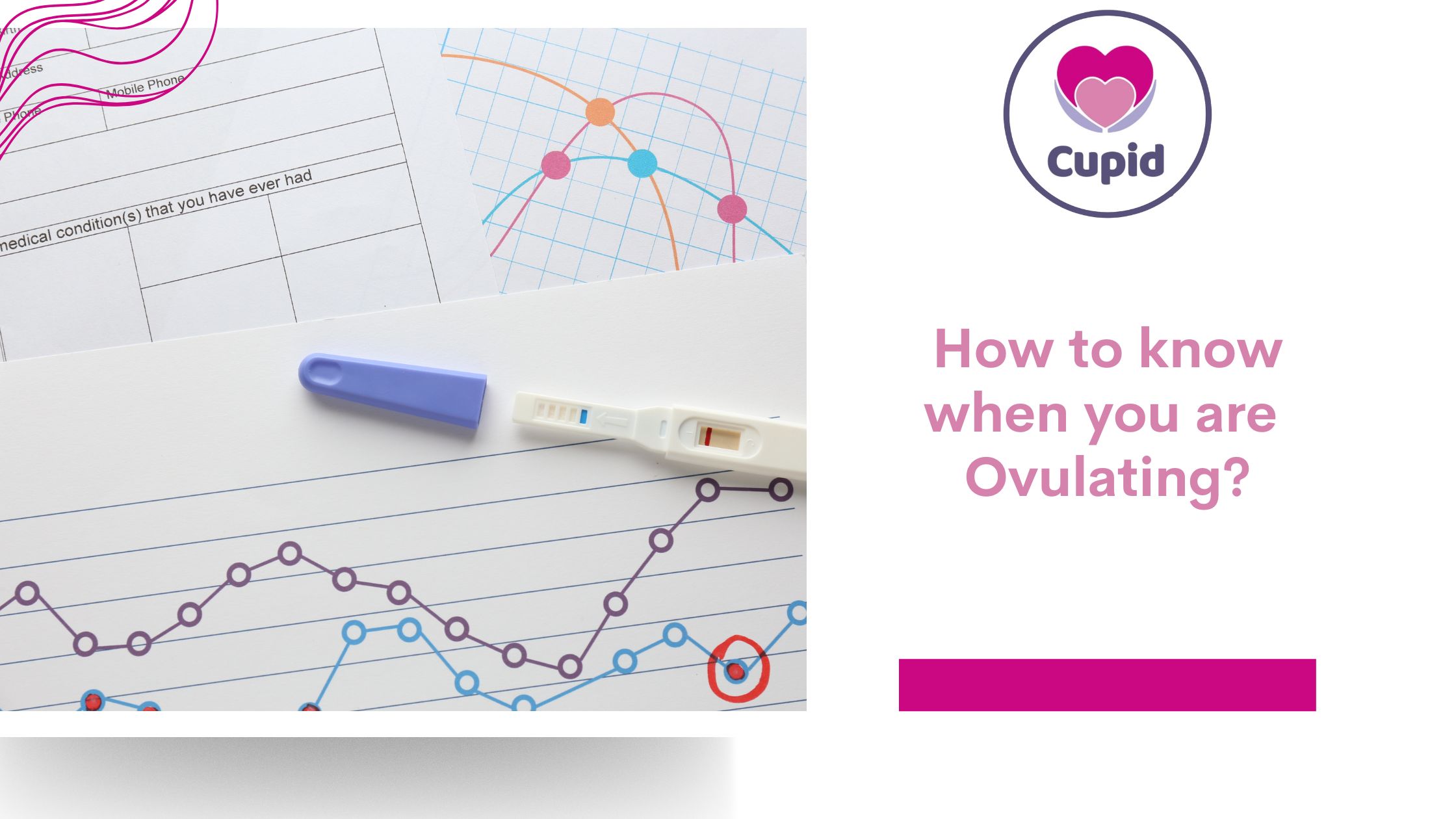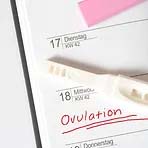
How do you know when you’re ovulating? Ovulation tracking can be tricky! I have irregular periods and my cycle is long about 34 days. When I was trying to conceive, my cycle varied and it was anywhere between 28 days and 40 days long. I didn’t realize until about a year later, that I ovulate at random times throughout the month. I was completely missing my ovulation window while Trying to conceive “TTC”. I spent so much effort coordinating with my husband at certain times of the month to get busy, and turns out that I was missing my fertile window all together! The month we finally conceived our little girl, I ovulated early. We were in Paris, and thankfully I packed ovulation tests with me. I was 9 days into my cycle, just a few days after the end of my period. My period tracking app didn’t even tell me that I was in my fertile window.
Let’s go over what your cycle is. A full menstrual cycle starts at day one which is the first day of your period and goes all the way through on average for most women to day 28, the day right before your next period. Divide the number of cycle days by two and that is the day you ovulate. For a 28-day cycle ovulation would be day 14. The most fertile time in an average 28-day cycle are the 5 days leading up to ovulation and up to one day after. This is call the “fertile window” and for a 28-day cycle are days 9-15. It’s imperative to track ovulation and also double check ovulation by testing using Luteinizing Hormone aka LH strips for ovulation if you are intent on getting pregnant asap and or have been struggling to conceive.

Your odds of conceiving without ovulation timing are around 16% and with ovulation timing are up to 33%.
Age is a factor in fertility rates, we can discuss that further in another blog. If you have heavy or irregular periods, you could have some underlying condition like myself. I have endometriosis which caused painful irregular periods and a heavy menstrual flow since I was a teenager. It made trying to conceive more difficult and ovulation tracking trickier for myself.
I saw a specialist after 9 months of trying to conceive because I was 34 and my husband 40. We didn’t want to wait the full year to take initiative to go to a fertility doctor. The fertility doctor had me go on a “fertility diet”, a paleo or whole 30 diet and also track my cervical mucous. I wish I would have known about basal body temperature tracking back at the time. See our blog about checking your basal body temperature here. Cervical mucous tracking requires that you get pretty intimate with your cervical discharge.
A brief overview of cervical mucous monitoring:
Even though I am a nurse, I hate the word mucous. I’m one of those kind of persons that can’t talk about pooping or anything of that sort while I’m eating. Something about it feels icky, my other nurse friends would make fun of me at work for this. Back to the mucus, so during your most fertile time in your “fertile window”, your cervical mucous will be thin and the consistency of egg whites. You don’t need to stick your fingers inside the vaginal canal to check the mucous. You can notice it in your underwear, or on your toilet tissue after you wipe yourself from peeing. If you have intercourse during your fertile window you will also notice that you have more natural lubrication, or your partner may notice and tell you that as well.
There is a specific method you can learn about called the Creighton method to help track ovulation by observing changes in your cervical mucus. My fertility doctor had me see a licensed Creighton practitioner to help teach me how to properly know how to check my cervical mucus. I had a class and purchased a booklet to keep track of changes. It was a little too much homework for me. They had me check my cervical mucous a few times a day after I urinated. To be honest, I did not keep up with my homework. Partly because I had no cervical mucous at all. This can be a hormonal issue, I had vaginal dryness too, progesterone cream ended up being my saving grace, but that’s a story for another time. I think I probably had mucous but it never came out on the tissue or in my underwear like they said it is supposed to.
I wish I would have known about the Kegg back then. I just recently stumbled across their awesome device while shopping on amazon. Instead of going to that class, which I had to pay $60 out of pocket for and the $30 workbook too, it would have been way easier to use the Kegg device.
I also have been through pelvic floor therapy twice and the Kegg would have killed two birds with one stone. The genius part of the device is that it checks your cervical mucous and tracks your most fertile days in under two minutes. After I graduated from pelvic floor therapy, I never kept up with my Kegels I was supposed to be doing daily! The device duals as a cervical mucous monitor and does Kegels for you by stimulating the muscles to contract.
This is key if you have issues with frequent urination, bladder leaks, poor pelvic tone from constipation or IBS. When I finished my pelvic floor therapy I had the most amazing orgasms. The nurse practitioner never mentioned that would be a benefit. Just FYI ladies, I cannot speak highly enough about doing exercise you know, down there. This does also come in handy when it’s time to deliver a baby, if you have better pelvic tone you will be able to push more effectively.
Other signs of ovulation and when you ovulate:
Other signs your ovulating are a pain in your lower abdomen near your fallopian tube. It is called Mittelschmerz which means middle and pain in German, such a fun name to say! It’s called this because ovulation occurs in the middle of your cycle. For myself, with a 34-day cycle, I ovulate around day 17. Something else to note is how often you should try to conceive during your fertile window. Most gynecologists recommend to have intercourse every other day in your fertile window. Sperm can survive for around 5 days inside the female reproductive tract. You do not want to get fatigued from getting busy too much or use up too many sperm specimens’ if your using a donor. Sperm can be costly! I found it interesting that sperm quality and quantity do not improve if you try to conceive daily. It is even suggested that you wait and abstain a day or two before providing a sperm sample by most clinics.
If your struggling to conceive, and you want to take it a step further, try at home insemination during your ovulation window. This is something that you can do on your own before seeing a doctor for struggling to conceive. You don’t need to wait a full year to try your own over the counter interventions such as timed intercourse, ovulation tracking or insemination kits. Most doctors will have you see a fertility doctor to talk about options for IUI or IVF after one year of trying depending on your age. At home insemination is much cheaper than IUI and its worth a shot if you want to try It out. It worked for me and many others all in the comfort of our own home!
Happy conceiving!
Glossary
Ovulation: the process in which a mature egg is released from the ovary.
Fertile window: the time during the menstrual cycle when your most likely to get pregnant
Cervical mucous: a fluid produced and released by the cervix. Hormones cause your cervical mucous to change in texture, volume and color throughout your menstrual cycle.
Basal body temperature: is your temperature when you’re fully at rest.
Cycle: Menstrual cycle is the monthly series of changes a woman’s body goes through in preparation for the possibility of pregnancy.
Paleo diet: Paleolithic diet aka caveman diet is a diet known to help with inflammation in the body. It is a gluten free and dairy free diet and low starch. Meats must be grass fed organic.
(Definitions and statistics found on Google search)

